A Revolutionary Record Player & the Man Behind it
I was attending the presentation of the province of Macerata at the New York headquarters of the Italian Government Tourism Board when I first saw this unique object.
I couldn’t figure out what it was. A small piano? A work of art? A complex musical instrument?
Luigi Pasqualini’s tunable turntable is all of these things. It’s a record player made out of expensive and carefully selected materials derived from various musical instruments. Its defining feature lies in that it can be adjusted and approaches the way we would normally play a conventional musical instrument. It encompasses the technology behind turntables and transforms listening from a passive experience into an active one.
Luigi Pasqualini, an enthusiastic man with long black hair and vintage clothes, has always been passionate about collecting records. As soon as he arrived in New York, he immediately went to the city’s record shops – mostly located in Greenwich Village, tight spaces, crammed with records, album covers, and memorabilia that few people recognize.
For the interview, we decided to surround ourselves with the actual materials that our conversation covered. During one the worst snowstorms in years, we went to stores like Bleecker Bob’s or Rebel Rebel, chatting while handling the vinyl, exploring the jazz section, and discussing the philosophy of music, the story behind this invention, and the power of jazz.
What was your approach to building this unique record player?
I have always modified the record players I’ve owned because I was fascinated by the fact that I could improve what was already there, adding different accessories, modifying the motor, and the belt drive. Then, while going through a difficult period in my life, I had this idea. I could take the completely opposite approach to the engineering behind the way these objects are built. I used to hang out a lot with musicians and I was very familiar with musical instruments and my idea was to use the same techniques in building musical instruments to build a record player instead. It was a way of reproducing music in the best possible way. I’ve always thought that there was a connection between the vibration that makes the sound that comes out of a violin chord better and the vibration of the tone arm on the turntable.
Had you built instruments before this?
Not really. The first thing I ever constructed was a platter made of various materials. I could insert different layers to see what the best combination would be and what produced the best sound.
How long did it take to build it?
I started around 2000 and finished in 2009. I was helped out a great deal by Floriano Nofri, an exceptional man who told me everything he knew, and even if he couldn’t figure out exactly what I was going to do, he respected my idea and never told me to give up. The atmosphere in his small workshop, crammed with parts and instruments, was fascinating. One day I brought him one of his violin bows that I had modified so that it could become the tone arm. He looked at it and said: “This is an invention. It needs to be patented and copyrighted!” He was in complete awe and I was flattered. So I went on to patent my invention. After that, Nofri gave me every single bow or part I needed and I had the opportunity to pick the ones that would sound best.
Did you have an extensive musical background before embarking on this enterprise?
I didn’t actually study music in school but I’ve always loved it and practiced it. For me the experience of music comes before the medium. The medium, though, the stereophonic gramophone is what enhances the musical experience. I want to be able to play the records I love and improve them without having to buy special records for record lovers. It’s a completely new philosophy.
Going back to my musical background, I organized a lot of concerts, especially jazz concerts and most of my friends are very talented musician. This allowed me to have direct access, direct contact with the actual sound of a piano, a trumpet, a double bass. They would come to play at my house and compare the sound of the trumpet with the sound that was coming out of the stereo.
How does the experience of music change with your turntable?
The greatest satisfaction was to see that my intuition was right. The more I experimented, the better the results would get and I would always be impressed by my progress. I basically realized that within the different grooves, so concrete and physical, I could find the smallest and most fascinating bits of information – minimal, unthinkable details. I could “taste” music better, feel its individual touch. It’s important to understand the variations in touch. When the same chords were played, after listening to them twice on my turntable you could hear the difference in terms of touch, push, and other dynamics. I realized that a record I used to listen to over and over, one that I thought sounded just fine, now sounded wonderfully better and that’s why everyone who experienced music in this way started to encourage me and support me.
How many of these record players have you built?
Well, each record player is composed of a belt drive, a platter, and an arm. I’ve built over thirty platters that my lathe turner helped me build. I’ve always pushed him to try hundreds of variations and I have to thank him because he stood by me, trial after trial. I have five or six belt drives and fifteen to twenty arms. I’ve always compared my instrument with what was already out there on the market, even those that are high end and very expensive, some costing over 100,000 Euros. I always felt optimistic when I compared the quality of my sound with theirs.
How did your invention get to Andrea Bocelli?
I was incredibly lucky. I believe that music “loves” me in a way, and it therefore opens doors for me. I got in touch with Bocelli because one of my relatives is a friend of his manager and I thought he might be interested. His manager was actually the one who told him about it. Bocelli was very curious and he said he wanted to try it. The interesting thing, for me, was that something else happened that day which proves how music has opened doors for me. In Macerata there was an exhibit of work by Luca Bellandi, whose paintings hung in my music room at home. At the exhibit I was blown away by his paintings and I contacted him through the event’s organizer but he never called me back. While I was on my way to Bocelli’s house he finally called to tell me how excited he was about my record player. So, during one single day I got the double satisfaction of interacting with two great artists I admired who were also interested in what I created.
How was your meeting with Bocelli?
I will never forget the day I spent with him. At first I thought he would just give me a few minutes of his time but I found out that he was waiting for me and despite his physical condition, he helped me construct and fix the turntable, piece by piece. He is a nice, open-minded man. I was very lucky because he liked the instrument so much that he bought it and I installed it. Not only did he allow me to use photos from our meeting to promote my invention, but he also wrote his personal thoughts about it as a kind of endorsement. I’m incredibly proud that his house will have a room solely dedicated to my record player.
Are there any other personal reasons why you built this?
I’m often asked that question, even by my closest friends. One of them, Carlo Rossi, an expert in the field of music and hi-fi stereos, asked me this same question while we were listening to a record. I didn’t know what to answer at first, but then I remembered that while I was building it I was listening to Bill Evans, my favorite artist in the whole world. I realized that I built it to pay homage to Evans, to find something of mine that I could almost put in between his art and my ears; I saw it as a way of contributing to his music, in my own way, to the beauty of it, through something that could enhance it. It’s not a coincidence that the name of the instrument is Horo WJE168: William John Evans and his date of birth. Everyone told me that it wasn’t the best marketing choice in terms of names but I’ll never change it.
How did you discover Bill Evans?
I was in my early 20s and I received some records for my birthday that I really didn’t like. When I went back to the shop to exchange them, I was told to check out some jazz records. I wasn’t that familiar with jazz but I bought two records and one of them was Bill Evans’ Autumn Leaves. There was an explosion in me and I progressed in my personal evolution. Up until then I listened to popular music like Pink Floyd and Genesis, but it’s when I discovered jazz that I truly understood music and started collecting records.
During the most difficult time in my life, I also discovered a Bill Evan’s song I had never really paid attention to before and it gave me incredible strength. I made everyone I cared about it listen to it, always explaining to them how it made me feel. At that moment, I thought that when we receive the best news of our life, we won’t laugh but we’ll cry. It’s a liberating outburst, that climax of happiness. And Bill Evans reminds me of the possibility of receiving amazing news.
We walk around the record store and he picks up a vinyl record by Benny Carter.
You see this object, how beautiful it is? This is not a practical thing, it will eventually get ruined and die….but that’s not always the case if you take care of it. The point is that as inconvenient as this object is, it has an intrinsic beauty simply because it needs care. You have to “look after” it and love it, but with CDs or “liquid music” (digital files, i-Pods, MP3s, etc.) this doesn’t happen – you’re just a consumer. I don’t have anything against i-Pods; I appreciate the fact that music can circulate so fast, but it’s still part of a consuming cycle and not affection or collection. With records you have to make a concerted effort. You have to think about a record, you have to go and find it, take it out of its paper case, clean it, and place it on the record player. In order to do all these things you need a clear intention, a desire, but with an i-Pod you’re just moving your finger and your mind is absent – it receives everything that’s thrown at it quite randomly. There’s something physical about this record. Looking at the print I can see when it was made and it takes me back to that time in history or reminds me of personal memories.
How does this physicality translate when you’re listening to it?
With my record player music it becomes tri-dimensional. There’s a depth of sound; you can hear some sounds right next to you and you don’t need four speakers for a stereophonic effect. There’s a Bill Evans’ record in which at one point the bass materializes on your left, distant from everything else, and the piano is on your right – especially if you’re listening to music in complete concentration, maybe in the dark, the auditory experience is even more heightened.
Are you thinking of selling your invention all over the world?
Well, of course I hope to sell it. I’m selling it to certain buyers. My plan for the future is this: I want to find a distributor who is more than a retailer. He has to be a music expert, a connoisseur. My invention is for a particular niche; it’s not comparable to other brands. My client is someone who wants to stand out from the crowd, a self-confident person who follows his or her intuition to the end. The bottom line, obviously, is that it has to be someone who really appreciates it, someone sensitive. I would then personally install it in my client’s home and explain how to tune it. The string is made by an artisan in Naples who also makes harps, and just like a violin, the tension determines the final effect. It’s really not that hard and once you get the hang of it, it’s just fun. Nothing is going to break, you’ll just enjoy yourself trying and trying. If a record is kind of dark, you can lighten it up or vice-versa, but it’s more than changing the “settings.” It’s as if you were to change the instrument or the speaker completely.
Basically, it’s an instrument that celebrates the idea of doing things on your own, having that satisfaction, changing the music to your liking and having fun trying.
It’s similar to how I define jazz. You know how Beethoven composed his sonata? In a way he improvised at first. He started by unconsciously changing the last note a billon times (da-da-da, da-da-do- da-da-dan) but then the sonata was composed by making a rational, conscious decision by choosing one out of the many notes. Well, if you see all the various efforts, all of these trials and glimpses of ideas before the conscious decision…that’s Jazz….
(Edited by Giulia Prestia)






























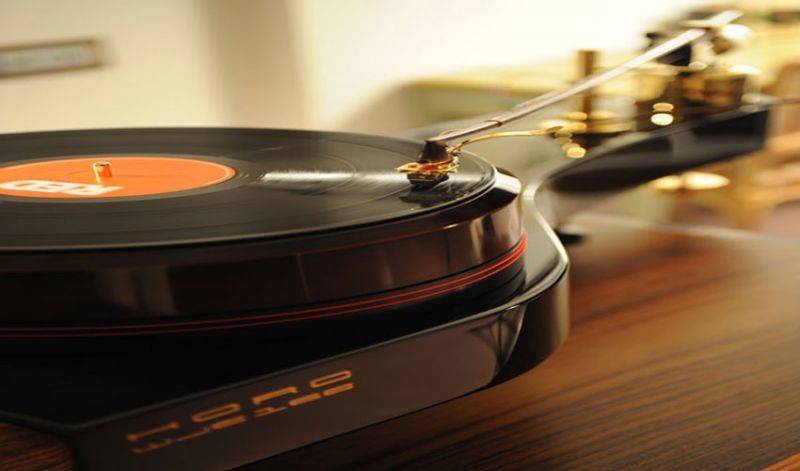
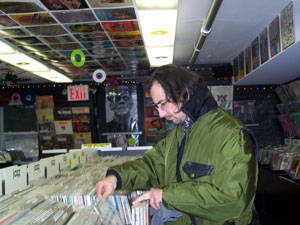
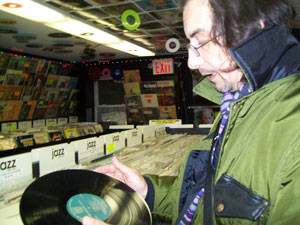
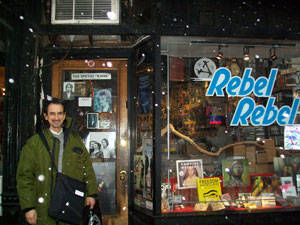
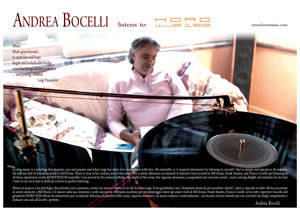
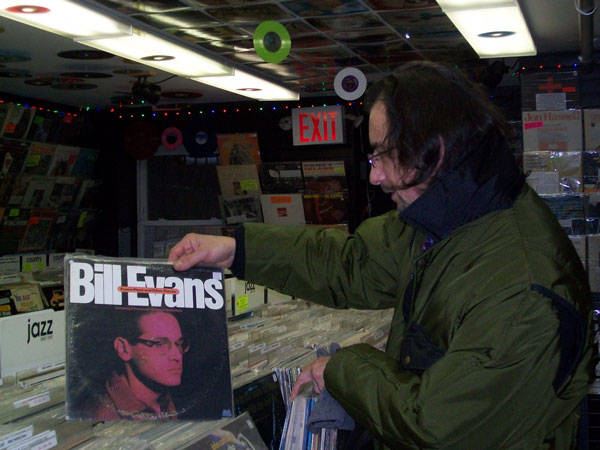
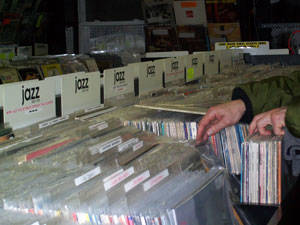




i-Italy
Facebook
Google+
This work may not be reproduced, in whole or in part, without prior written permission.
Questo lavoro non può essere riprodotto, in tutto o in parte, senza permesso scritto.